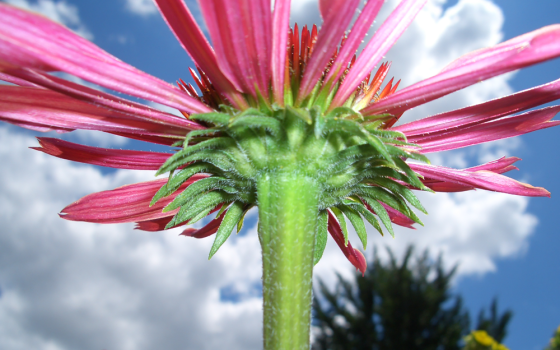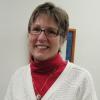When I begin to notice an idea recurring in different contexts, it's an indication I should pay attention. Currently that idea is "generativity," a term attributed to Erik Erikson who used it in 1950 to describe concern and care for the next generation, the desire to provide for and gift the future.
Recently I read Barbara Bradley Hagerty’s book, Life Reimagined: The Science, Art and Opportunity of Midlife. Now that I've reached the chronological stage of generativity (40-65 years old according to Erikson) I understood Barbara viscerally as she addressed the need for generativity as part of a healthy midlife journey.
A few weeks ago I met the idea again when Benedictine Sr. Edith Bogue addressed a gathering of sisters and oblates at our monastery, on the topic of carrying monastic life to new generations. It can't be done with tweaks, she told us. We must be intentional.
Life is one choice after another even when we aren't conscious of intentionally choosing. And we can't halfway choose, halfway make a decision — it is yes or no. If we ignore the options rather than make a conscious choice, we are in effect deciding by forfeit. Which is a choice.
Every action of every day, starting with getting out of bed in the morning, is a choice. And we don't know where those choices will lead. Outside of the very minute I am writing these words, I don’t know with certainty what the future will be. Not even the next 10 minutes.
But even so, we want to provide direction for the future. When we're younger it's our own future we think about. But as we get older, it’s the future that matters: the future of those who come after us, of the works we have created, of our communities, the human community and the earth. Granted there's some ego involvement, but in the end we know that at the moment of death none of it will be ours any longer. We can come to that moment in peace if we believe we have done our best to leave the best to those who will follow us.
For those of us experiencing midlife in religious life right now it is difficult to experience generativity. We were children or just coming of age during the heady days of Vatican II renewal. We have lived the fruits of that period, but haven’t ourselves experienced the rush of transformation and rebirth. Our lives have been about tending what was given us.
Edith, a sociologist and currently vocation and oblate director for the Benedictine Sisters of Duluth, Minnesota, addressed what I have been experiencing as "stuckness," a focus on maintaining good works but not renewing life. In Erikson’s eight developmental stages (of which generativity is the seventh) each stage has an opposite; the opposite of generativity is stagnation. "Plateau" is the word Edith used, as she put a graph of an organizational life cycle on the screen. She suggested we sloped up for years and then plateaued after Vatican II. Now after 50 years of being stuck at the top of the cycle, we're at a point of critical juncture: either follow the traditional downslope to organizational death or choose to transform ourselves and begin a new upward slope.
I fear some communities are already too far down the slope, their critical juncture happened 15 or 20 years ago and they tweaked their way along rather than making intentional choices for ongoing transformation as the world careened and changed around them.
But for those now teetering on the brink of the downslope — those that still have life and energy and passion to ask the hard questions and make the choice for transformation — the time is now. What are the generative questions to ask now, the generative actions we must take now?
Complacency and conformity are among our biggest threats. We need urgently to be nonconformists. We don’t need new vocation campaigns or fundraising strategies or even new activism. With gut-level courage we need to look at ourselves from the inside out, not basing decisions on old standards but pushing forward with a new heart and a new vision, remembering that the heart of a religious vocation is total life dedication to seeking God. Human beings are spiritual beings; many if not most seek God in some way. But for vowed religious, that is the core and center of our being. That is our vocation. How we live out that seeking, how we respond in our ministries, communal witness, outreach, and call for peace and justice, will change over time. The how will change, the why will not.
Many communities and leadership organizations are working hard under what Edith called "the weight of present tasks": upkeep of properties, needs of aging members, administration of ministries, and financial concerns. There is also "the weight of our history": old assumptions and memories that limit our attention to the call to transformation or renewal.
I believe our real and immediate need is to create as many think tanks or brain trusts as we have committees and leadership teams dealing with the "weight of present tasks." (Braintrust, Pixar Animation Studio’s method for enabling creativity is “candid feedback and the iterative process–reworking, reworking, and reworking again,” according to its president, Ed Catmull.) How intentionally do we look at the things we do each day — our rituals, work, living arrangements, social gatherings, governance and financial decisions? Do we simply keep on doing the same things we did yesterday or ten years ago, tweaking this or that as we have fewer people capable of doing, organizing or cleaning up after it?
Intentionally choosing transformation is not failure and does not diminish what has been. And success is not always a good thing. We're doing all the right kind of planning for "success" in the process of diminishment — studying our ministries, banking up our retirement funds, planning mergers, and selling properties. But that is not the kind of success I want. I want to be successful at renewing ourselves, at creatively reinventing how we seek God here and now. For the sake of the future.
When a young woman says to me that she feels the same existential loneliness that brought me to seek God in community, and another tells me that she longs to find that elusive something more — that she already knows she is different than many of her peers because of her quest — I know that there are still vocations to religious life. What do those vocations look like now? How do we live them now in ways that these women can embrace?
My mother experienced generativity through her children, grandchildren and great-grandchildren. I hope to experience it in helping to make our wisdom traditions accessible to today’s women, today’s seekers. In religious life today we hold a treasure that the future needs. We can seed the future just as my mother did. But just as my mother never expected the lives of her granddaughters to look like hers, we can't expect our future lives to look the same as they do now. Our call to generativity is transformation.
[Linda Romey is a Benedictine Sister of Erie, Pennsylvania, and is the community's web developer/designer. She does marketing for them, Monasteries of the Heart and Benetvision. Prior to entering the Erie Benedictines, she worked seven years in Colombia. She is a former marketing and advertising manager for the National Catholic Reporter Publishing Company.]

